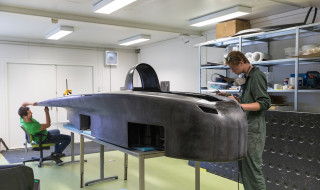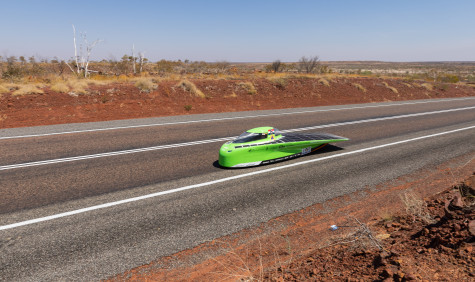Through the outback with a lightning fast solar car
A team of students from Groningen built a racing car powered by solar energy. Under the name Top Dutch Solar Racing they participated in the Bridgestone World Solar Challenge, a race across Australia. They crossed the finish line in 4th place. The aerodynamics of their car were tested on our national supercomputer.

Eline Hesta
The Top Dutch Solar Racing team consists of students from mbo, hbo and wo: from Hanzehogeschool, Friesland College, Noorderpoort and the University of Groningen. Each does what he or she is strongest in: organisation, engineering, electronics or communication. "That collaboration in such a diverse team went extremely well," says Eline Hesta, a communications student at Hanze University and responsible for communications within the 2019 race team. "When you put such different people together, you can complement each other in a very nice way."
"The knowledge we have gained will be passed on to a new team"
Design testing before building

Jussi Vuopionpera
The team was working under time pressure and on a limited budget. Building and testing all kinds of different models of cars is then obviously not possible. That's where the supercomputer enters the scene. By simulating the car's aerodynamics in the computer, you can improve your design before actually building the model.
The more detailed and realistic your simulation model, the more computing power and memory you need. Jussi Vuopionpera, responsible for operations & sponsorships at the Top Dutch Solar Racing team 2019 and a bioinformatics student at the Hanzehogeschool: "To perform the calculations, we used a hundred CPUs, central processing units, on the supercomputer. As a result, a simulation took only a few hours on average. We couldn't do such simulations on an ordinary PC because it simply doesn't have enough memory."

Simulating multiple scenarios
"We ran simulations on the national supercomputer for about a month. Thanks to the supercomputer, we were able to simulate multiple scenarios and thus optimise the design of the car. We were also able to investigate the effects of driving with crosswinds at different angles."
"The knowledge we gained will be passed on to a new team so that other students can benefit from it too," says Vuopionpera. Hesta adds. "In any case, we hope we have shown that in the northern Netherlands the environment is also good for doing these kinds of cool engineering projects. We basically started from nothing, but by working together, we have brought this down."
Read more on the Top Dutch Solar Racing Team website
Text: Josje Spinhoven
Photos: Job Verkruisen, Top Dutch Solar Racing

